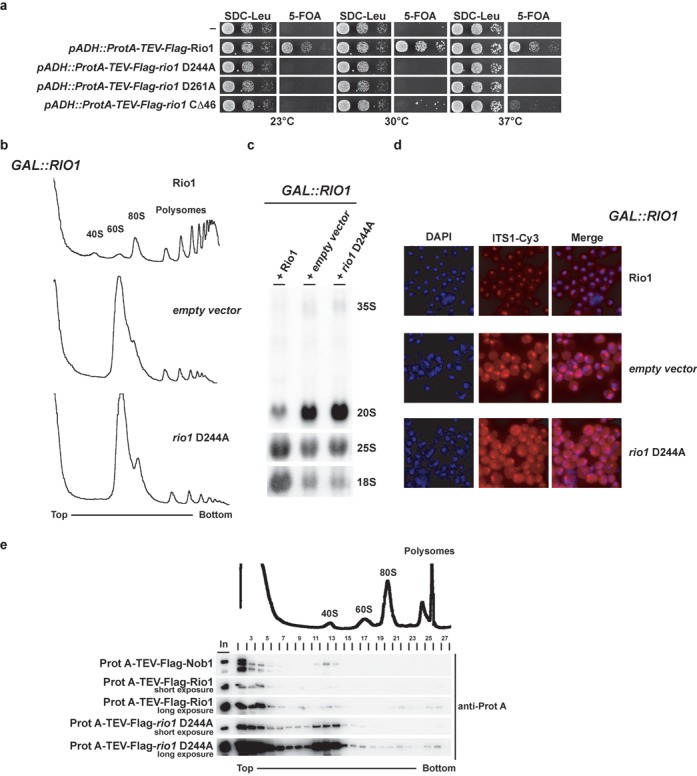Figure 3.

Rio1 catalytic activity is required for late 40S cytoplasmic maturation and regulates its pre-40S dynamic association. (a) Rio1 catalytic activity is essential for yeast growth. Viability of mutations affecting Rio1 catalytic residues (rio1 D244A catalytic Asp and rio1 D281A Mg2+ coordination and pAsp) was tested in a RIO knockout strain background complemented by a RIO1 gene carried on a plasmid (CEN3, URA3). For plasmid shuffling experiments serial dilutions of the indicated strains were spotted on SDC-Leu (loading control) and 5-FOA (shuffling) plates for 3 days at the indicated temperature. (b) Rio1 catalytic activity is required for 40S biogenesis. Polysomes profile analysis obtained from whole cell lysates from Rio1-depleted cells (16 h in SDC-Leu) either complemented by an empty vector or a vector (CEN3, LEU2) carrying a wild-type RIO1 or a catalytically inactive allele (rio1 D244A) is shown. The A254nm profiles of the derived sucrose gradients fractions are depicted. (c) Rio1 catalytic activity is required for 20S rRNA processing. Northern blot analysis of steady-state (pre-) rRNA species on Rio1-depleted cells (see above) using probes complementary to the ITS1, 18S and 25S mature region of the rRNA. (d) Rio1 catalytic activity is required for cytoplasmic processing at site D. Steady-state sub-cellular localization of ITS1 containing rRNA species was monitored by fluorescent in situ hybridization (FISH) on para-formalhehyde-fixed Rio1-depleted cells (see above) using a Cy3-conjugated probe complementary to the ITS1 region of the rRNA (see the Materials and Methods section). (e) Rio1 catalytic activity regulates its dynamic association with pre-40S. The co-sedimentation behavior of the indicated constructs was assayed by western blotting analysis using the indicated antibody from 5 to 40% sucrose gradient fractions of whole cell extract from wild-type cells co-expressing the indicated constructs. The A254nm profile of an exemplary derived sucrose gradients fraction is depicted.
